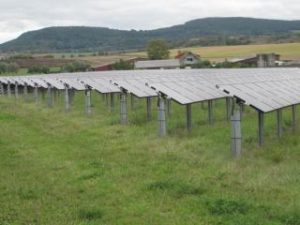Minnesota solar battle pits utility against developers
 In 2013, the Minnesota legislature passed a law to allow the creation of “solar gardens”. The gardens were to provide solar power for renters and others who for various reasons could not put solar panels on their residences. The law capped the size of these projects at 1 mW each.
In 2013, the Minnesota legislature passed a law to allow the creation of “solar gardens”. The gardens were to provide solar power for renters and others who for various reasons could not put solar panels on their residences. The law capped the size of these projects at 1 mW each.
Xcel Energy, Minnesota’s major utility, began accepting applications for solar gardens in December, 2014. The interest in these projects was overwhelming. The utility received applications for gardens totaling 560 mW worth of electricty. According to this article, 95 percent of the applications were for multiple projects with an aggregate size greater than 1 mW, some of them as big as 40 mW.
As a result, in late April, Xcel filed a letter with the Public Utilities Commission (PUC), saying it would cap any project at 1 mW, automatically disqualifying most of the projects proposed. Xcel argues that it could develop utility-scale projects at less cost per kWh than these aggregated solar gardens. It believes allowing the aggregated gardens to go forward would put an unfair cost burden on energy consumers who don’t participate in them.
Solar garden developers charge that Xcel was changing the rules in the middle of the game. Xcel denied this, and accused solar garden developers of violating the intent of the solar garden law by co-locating solar projects to gain more favorable financing terms while still receiving solar garden credits of 12-14 cents per kWh.
John Farrell, a senior researcher at the Institute for Local Self-Reliance (ILSR), rejects the utility’s arguments. He says that Xcel’s claims about the lower cost per kWh of large-scale utility-based projects are “spurious” and that its assertion of support for the community solar program’s intent is “a total farce.” He says that Xcel’s actions are an attempt to delay the construction of these solar gardens so they are unable to qualify for the federal Income Tax Credit, which expires at the end of 2016.
In June, the PUC agreed to temporarily cap co-location output at 5 mW. This compromise satisfied neither party. Xcel sought a cap of 1 mW, while solar garden developers wanted the cap at 10 mW. In September, the cap will return to 1 mW. Farrell asserts that, despite the compromise, Xcel got what it wanted, which was “[to crush] a serious competitive threat from large-scale developers aggregating community solar projects.”
However, Farrell doesn’t disagree with the settlement. “Community solar is more likely to serve the goals of being geographically in community and community owned/controlled if it’s at a smaller scale and actually built in the urban core,” he said. “1 mW is large enough and the result of the settlement [will not be] to reduce development of community solar.” Rather the result will be “to diversify who can own and develop at the sweet spots on the distribution system.”
Farrell claims that there is a “ready remedy” that would resolve these conflicts between the utility, solar developers, and consumers. He favors crediting projects with what is know as the “value of solar”. This accounting method for solar was authorized by the same legislation which created the rules for solar gardens.
The idea behind “value of solar” is that utilities should pay a transparent and market-based price for solar energy. This price, based upon several factors – including avoiding the need to build additional power plants and reducing wear and tear on the grid – was determined to be 13.6 cents per kWh. Farrell believes utilities like Xcel won’t embrace value of solar as a compensation method because they think they can roll back the current accounting method, net metering, and with it, retain their current business model.
